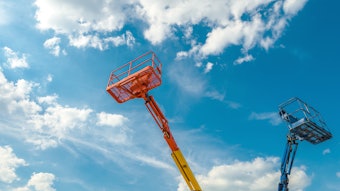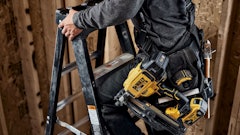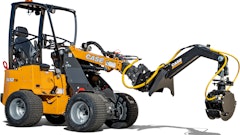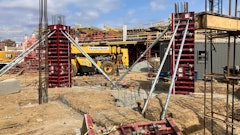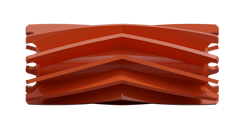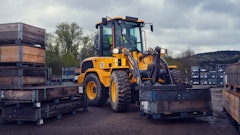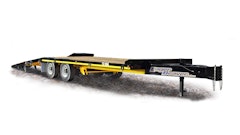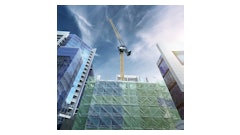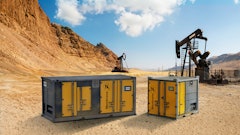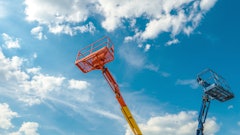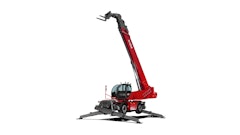Rental professionals might not like to admit it, but it's true that accidents, mishaps and small disasters bring in business. When there's water in the basement, fallen tree limbs in the yard or stubborn stains on the carpet, your customers come to you. You are truly a solutions provider.
Nowhere is this more true than when a building has been damaged by water. Wet floors can warp and buckle, damp carpets promote mold and mildew and soggy drywall threatens the structural integrity and visual appeal of homes and offices. Luckily for your customers, you're armed with all the right tools and equipment. Or are you?
To properly serve customers with damage restoration needs, you must start by having the right stuff in your inventory. According to Matthew Perry, product marketing manager, Powr-Flite/CFR, this boils down to a few key items. "Historically we've seen our rental and restoration customers stock the five basic 'must haves' for damage restoration jobs."
They include:
Wet/dry vacuums with HEPA filtration to contain airborne contaminants
Flood pump machines and extraction wands for getting the water out quickly if flooding has occurred
Dryers/airmovers (often called squirrel cages), or for areas needing to dry quickly, downdraft fans which evenly spread the air across the floor surface at high speeds
Ducting products to attach on dryers/airmovers for drying interior walls and sheetrock
Dehumidifiers for removing moisture from rooms
"Being sure to stock these basic items for damage restoration season, typically from May to October, is ideal for leveraging a rental business as a market leader," Perry says.
Sarah Sherman, sales representative for Ebac Industrial Products Inc., stresses the importance of an appropriate dehumidifier. "Dehumidifiers and whole-room, high-velocity fans are the quickest and most effective way to dry water-damaged areas. They should be a staple in every rental business to accommodate the damage restoration market. Each one has unique capabilities on its own, and when used together, they can provide a water damage solution for just about any situation, she says.
Mark Wierda, rental account manager with Dri-Eaz, notes that rental businesses should consider carrying an LGR (low-grain refrigerant) dehumidifier, which is more effective than conventional dehumidifiers. While more expensive to acquire, rental businesses can charge a higher rate for these models because they are more effective. To illustrate the difference, Wierda explains that an LGR dehumidifier can extract up to 140 pints of moisture from the air per day (depending on the size of the unit, moisture levels and room drying tempatures) while a comparably sized conventional machine can only extract 60 pints per day. Plus, they have the added advantage of being environmentally friendly.
LGR dehumidifiers are important to contractors working on damage restoration projects because insurance companies will pay contractors more per day when they use these models versus what they will pay those who use conventional models.
"In some cases, insurance companies won't even pay for conventional dehumidifiers," Wierda states.
Partnering air movers with dehumidifiers can be a very effective - and profitable - equipment package, Wierda says, as the air movers do an excellent job of moving the air around so moisure can be more easily absorbed by the dehumidifier.
One more piece of equipment rental businesses should consider is an air scrubber, Wierda says. Complete with a HEPA filter, these units have the ability to filter 99.97% of dust and fine particles (.3 micron or larger) from the air. This is extremely important in situations where mold and mildew are present, as spores can be hazardous to the health of occupants if they aren't removed.
Air scrubbers require a new filter with each new rental in order to eliminate cross contamination. This presents another revenue-generating opportunity, as HEPA filters cost around $130 each.
Air scrubbers can also be used for odor removal. Instead of using the HEPA filter, odor removal requires a charcoal filter that retails for around $30. In all such cases, Wierda suggests a filter fee with the rental of these units to create an additional revenue stream.
Don't forget...
Aside from the aforementioned equipment, there are other items rental businesses should consider carrying to adequately serve customers with damage restoration needs.
"We typically recommend carrying ozone machines, foggers, disinfectant products and moisture meters," Perry suggests. "Also, people who are not often immersed in disaster restoration jobs tend to forget the fact that most disaster sites do not have enough electrical power to support cleanup efforts, so we highly recommend bringing gas-powered generators."
Wierda suggests it's a good idea to carry replacement filters for the dehumidifiers you carry. "This can be a huge revenue stream," he says. "Some rental businesses charge a filter fee on top of the rental rate, while others incorporate the filter cost into the overall rate. This can range from $12 to $20 per rental."
Perry adds that customers like to be offered a complete solution to cater to their specific needs. "When you can offer them that complete solution and save them from having to make several trips to complete their job, this makes you a hero in their eyes," he says. "We recommend setting up disaster restoration kits. Rental stores may include items like: deodorizers and disinfectants, filter masks, moisture meters, squeegee tools and microfiber towels. After the end of the job, offer to take back and credit the customers for the items they didn't use. Often, customers will not return the extra items, and in the process you are able to provide excellent customer service and fulfill a need often overlooked by potential competitors."
Promotion is key to success
Having the right mix of equipment is the first step, but it won't help if your customers aren't aware of what you have to offer. Be sure to actively promote what you have, so that in the event of water damage, your customers think of you first.
"The most important things are to know your products, how they will help your customers meet their individual goals and be willing and able to provide product support and education when needed," says Sherman. "When marketing cleaning and restoration products, it's important to be able to see the big picture and offer a complete solution; a one-stop shop, if you will."
Perry stresses the importance of pursuing advertising methods which do not bear a large financial commitment. "I am a huge proponent of 'word of mouth' advertising. It carries its weight in gold as the saying goes," he says. "I often recommend to customers they contact their local fire departments and provide them a complete list of equipment and services they offer. Rental owners also need to join their local chamber of commerce and attend meetings to spread the word about their offerings and abilities. This is a great venue for meeting remodeling contractors and homebuilders."
He adds, "If it comes down to investing money in advertising, it's best to pay for optimized web searches, as more and more people are using the Internet to find local businesses. This means if someone were to search for disaster restoration in, say, Mobile, AL, using their Google toolbar, the search engine will list you as one of the top-three results in the area. Typically consumers will choose from these top choices.
"Also, it makes sense to advertise in the local Yellow Pages, but keep in mind that customers are typically going to choose from the first three selections, so it makes sense to pay to get in those first three spots. In addition, if you choose to advertise in the Yellow Pages, do not purchase a business card section, pay for the entire page. It will pay for itself."

